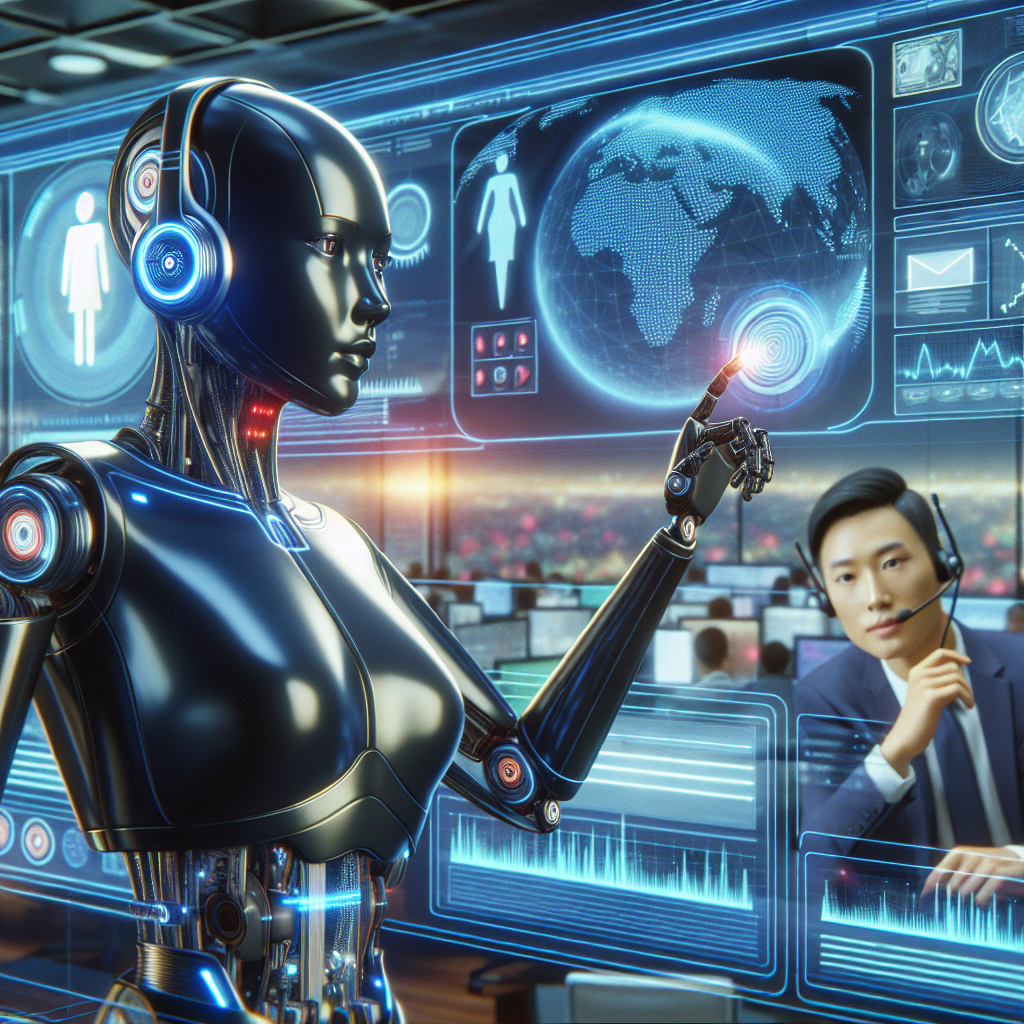
With the explosion of technology, modern call centers are becoming intelligent enterprises, powered by advanced technologies such as Artificial Intelligence (AI). With AI in the picture, more than just conventional call scripts and wait times are being optimized - even factors such as shift patterns and break times are being targeted for efficiency.

Staff scheduling in call centers is a critical process. A well-optimized schedule improves not just employee satisfaction but also the quality of customer interactions. However, creating a great schedule is no small feat given the irregular demand patterns, fluctuating call volumes, and shift preferences of the staff. Enter AI and Machine Learning (ML) - these cutting-edge technologies are now being used to create predictive models of call demand, which can then feed into the scheduling process. Effective use of AI technology in call center management leads to more balanced workloads, reduced employee strain, and ultimately, happier customers.
But that’s not all; AI can optimize break times as well. Traditionally, break schedules have been static and inflexible. However, AI can make these more dynamic, allocating break times when call volumes are predicted to be low. This results in continuous coverage without straining the workforce.
In essence, by implementing AI in call center management, operators are able to optimize their operations, elevate the customer experience, and enhance their workforce’s well-being. It’s a triple win that is transforming the call center industry.
Understanding AI-Driven Scheduling
In the realm of call center management, scheduling often emerges as a significant challenge. Various elements like call volumes, break times, shift patterns, and workforce flexibility are just some of the factors to be considered. However, the advent of Artificial Intelligence (AI) presents an innovative solution to these challenges. AI-driven scheduling algorithms analyze historical data and predict future call patterns to create optimal schedules, significantly improving both the productivity and job satisfaction of staff members.
The intelligence of AI algorithms is in their learning capabilities. These tools learn from a wide variety of data sources, including call logs, customer feedback, and agent performance metrics. By interpreting these numerous data points, AI can predict call volumes and handle times for future periods with remarkable precision. Therefore, enabling call centers to align agent availability with anticipated need.
One essential component of AI-driven scheduling is its ability to manage break times effectively. Breaks are necessary for staff well-being and productivity, but inadequate break management can lead to suboptimal workforce utilization. AI manages breaks in such a way that service level consistency is maintained while ensuring agents are appropriately rested.
Scheduling software, powered by AI, allows for the development of dynamic shift patterns. Instead of adhering to strict and often inefficient fixed schedules, AI can adjust shift patterns based on real-time call data. Consequently, a busy period can be adequately staffed while a quiet period can operate with fewer agents, ensuring operational efficiency.
In call center operations, creating the perfect schedule is a critical yet complex task. With the inclusion of AI-driven scheduling, call centers now have the opportunity to enhance their operational efficiency, staff productivity, and customer satisfaction, all while reducing operating costs. The potency of AI in optimizing call center operations cannot be overstated.
It's safe to conclude that the integration of AI into call center scheduling is a game-changing move, poised to redefine the dynamics of modern call center operations.
With the advanced capabilities of artificial intelligence (AI), call centers are experiencing remarkable efficiency improvements in staff scheduling and break pattern optimization. Combining AI with analytic tools enables organizations to maximize employee productivity while ensuring an excellent level of customer service. Intricacies such as call duration, call volumes, and workforce availability can be dynamically addressed, making AI a chief component in call center optimization.

One of the key areas where AI makes a significant impact is optimizing employee break schedules. AI uses predictive models to determine when call volumes are expected to drop, rescheduling breaks accordingly so there are always enough personnel available during peak times. This smarter approach to scheduling prevents understaffing, enhances customer satisfaction rates, and safeguards employee well-being.
Moreover, the AI-driven break optimization not only supports operational efficiency but also protects and enhances employee productivity and satisfaction. By providing breaks during less busy periods, employees can rest without the stress of heavy call traffic. Workforce fatigue is minimized, leading to increased job satisfaction and improved performance.
Additionally, AI-powered systems are capable of learning from historical data and evolving their algorithms for improved accuracy. This means that break schedules adapt to changing trends in call patterns, supporting flexibility and responsiveness in the dynamic call center environment. As a result, call centers can maintain high service levels while ensuring the best possible use of their human resources.
In summary, the integration of AI in call center operations offers a win-win situation for both the organization and employees. Through intelligent break scheduling, work pressure is balanced, customer service is enhanced, and employees are offered a more positive work environment. The future of effective call center management is undoubtedly intertwined with the innovation and adaptability of artificial intelligence.
Two prominent case studies can serve as benchmarks when it comes to successfully implementing AI in call center scheduling. These examples reveal not only the practical advantages of this innovation but also the critical lessons learned during the integration process.
The first case study is the deployment of AI scheduling at IBM's global telecommunication services. IBM utilized the advanced features of AI to predict and carefully assign work schedules to their call center representatives. The AI system took into consideration different factors such as agent expertise, customer inquiries complexity, shift patterns, and even legal requirements — variables which would be too extensive for manual planning. The results were impressive: a significant reduction in scheduling time, maximization of agent availability, and a remarkable increase in customer satisfaction. Perhaps the vital lesson learned here was the importance of monitoring and constant adjustment after the initial AI scheduling rollout.
The next example focuses on a large-scale online retailer: Alibaba. They turned to AI for scheduling to handle the massive influx of customer inquiries during high-peak seasons. The AI system optimized shift schedules by analyzing demand patterns and individual agent performance. This not only improved operational efficiency, but crucially, it also enhanced employee satisfaction as the AI algorithm accounted for agent preferences and needs during scheduling. The Alibaba instance underscores how combining technology with a human-centered approach can be a powerful strategy in achieving optimal productivity and employee morale.
In conclusion, while the integration of AI into call center scheduling promises substantial benefits, it's vital to approach the process with both technology and people in mind. Ongoing monitoring, adjustments, and human factors consideration are essential elements to incorporating AI successfully.
Artificial intelligence (AI) is continuously evolving, offering transformative solutions to multiple sectors, including call centers. As AI becomes more refined, its effectiveness in optimizing call center shift patterns and break times is anticipated to grow exponentially.

One of the promising advancements to watch out for is Machine Learning (ML) further integrated with AI. These platforms are anticipated to predict agent-customer interactions based on historical data, facilitating efficient scheduling. In turn, this serves to enhance customer satisfaction while boosting agent morale by reducing overworking issues.
Another future trend is the combination of AI with Internet of Things (IoT). In this model, AI-powered IoT devices could track call attendance, breaks, and overall performance. This automation will free up management from manual supervision and schedules optimization, focusing more on training and development.
Sophisticated chatbots can be expected to provide live intervention during peak hours, allowing call center employees to have flexible break times without affecting the center's performance. These AI operatives will share load burden during high-demand periods while giving agents adaptive resting time.
Lastly, the adoption of Digital Twin technology in conjunction with AI can make a significant difference. In this scenario, digital representations of physical assets, systems, or people are built which can train AI systems to predict ideal shift patterns and break times, enhancing the workforce management's precision.
Emerging technologies and the rising acceptance of AI in call center operations suggest an exciting future for optimizing shift patterns and break times. As the industry picks up pace, the key to success will be quick adaptation and focused implementation of these new tools.
Start your free trial for My AI Front Desk today, it takes minutes to setup!








